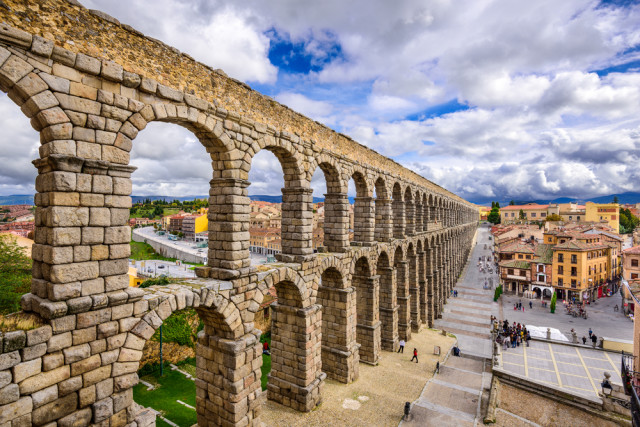 Sean Pavone
Sean Pavone
Even in a country packed with cities and towns boasting all manner of dramatic ancient landmarks, this small city (pop. 57,000) of Old Castile – now part of the autonomous region of Castile León – remains quite a standout. For Segovia – just a couple of hours by car or train from Madrid (and a half hour via high-speed AVE rail) – is often done as a day trip from Spain‘s capital, but really warrants tarrying longer.
The single biggest reason why this city stands out is the enormous ancient Roman aqueduct (top) slicing through the middle of the casco viejo (old historic centre) in Plaza Azoguejo. Double-tiered, up to 28.5 metres (93 1/2 feet) high, and divided into 167 arches, this granite-block behemoth dates back to the 81-96 CE reign of the emperor Domitian, and along with the Hercules lighthouse outside A Coruña, Galicia, is for me the most dramatic remnants of Roman Hispania.
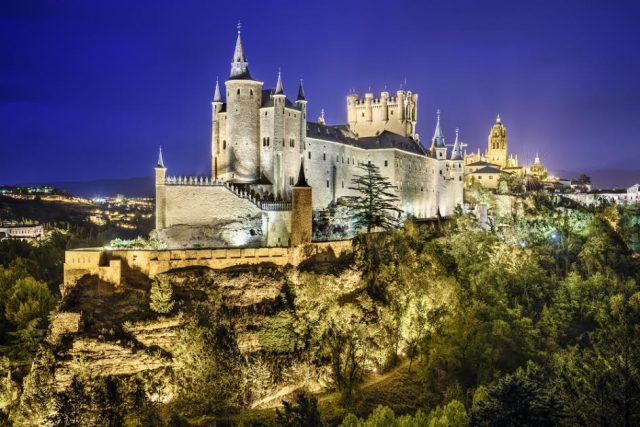 Sean Pavone
Sean Pavone
Segovia’s second major icon – and like the aqueduct, a very early addition to the UNESCO World Heritage Site roster – lies on the edge of the casco viejo, atop a rocky crag. If the Alcázar (above) looks familiar, that may be because it was a primary source of inspiration for Walt Disney‘s Cinderella Castle (along with several others, including Bavaria‘s Neuschwanstein). The first reference to the current structure on the occurs in 1120; it was built on the site of a Moorish fort when the region was part of mediaeval Islamic Al-Andalus, and that in turn replaced a Roman-era fort. Dramatically shaped like the bow of a ship, over the centuries the Alcázar served as not only a Castilian royal palace but a prison and military academies. Today visitors may roam its beautiful keep, grand halls appointed with period furnishings, and armory museum.
The third major landmark, though naturally overshadowed by the other two, is “the Lady of Cathedrals” (below, seen with the mediaeval city walls). Located on the old town’s main square, the Plaza Mayor, the last Gothic cathedral to be built in Spain (and one of the last in Europe) was started in 1525, completed in 1768, and sports exquisite tracery work and stained glass windows, along with three vaults soaring 33 metres high.
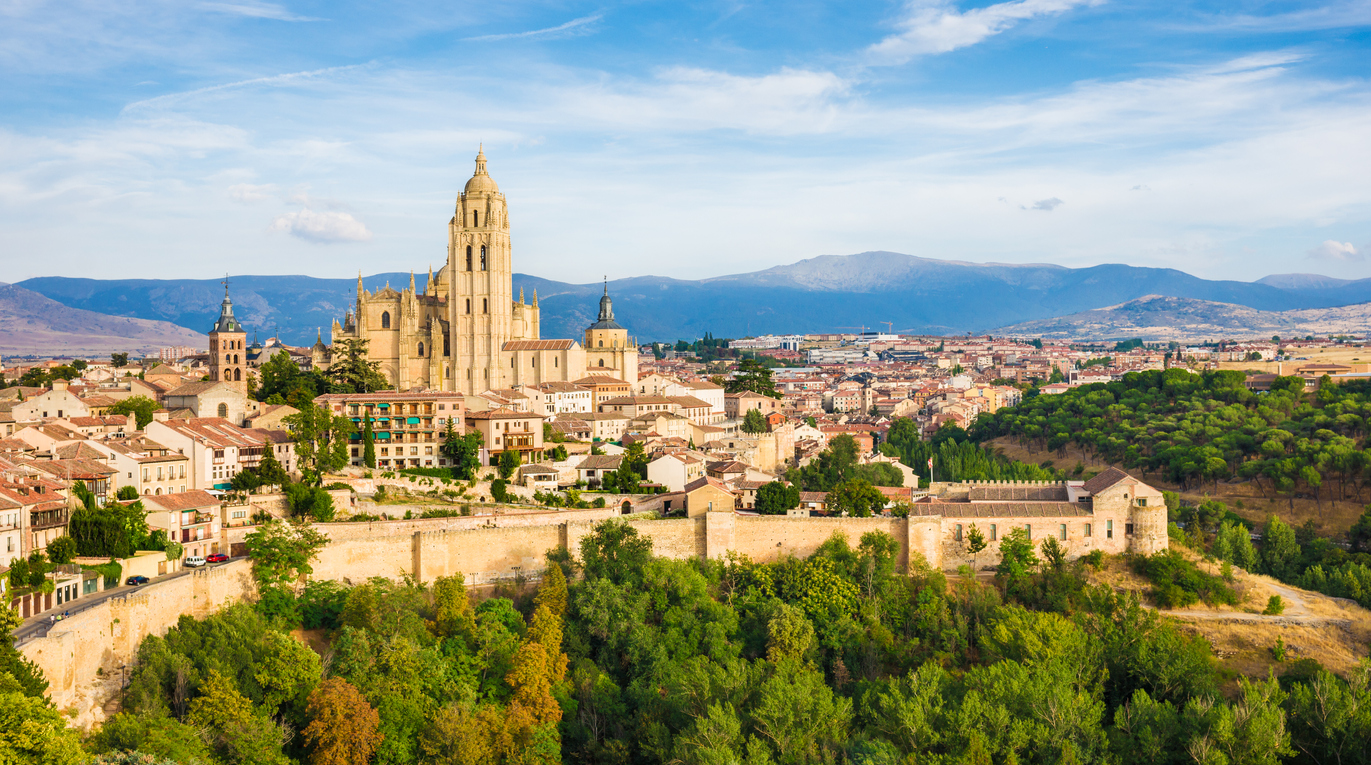 miralex
miralex
There are a number of other cool things to see/do in the casco viejo, surrounded by 2,250 m (7,380 ft.) of granite walls nine m (30 ft.) high, originally built by the Moors in the 11th century. Check out another small gem of a plaza, San Martín, which along with the lovely eponymous Romanesque Church of San Martín (12th century) has a statue of Juan Bravo, hero of the early-16th-century Comuneros revolt against the royal tyranny of the day, and is also home to the 14th-century Torreón de Lozoya, a former armoury which now houses modern-art exhibitions. And over on Calle Juan Bravo, check out the 15th-century Casa de los Picos with its diamond-patterned façade, also often hosting contemporary art exhibitions.
Furthermore, a section of the old quarter was once its thriving judería (Jewish ghetto), before the wholesale expulsion of the Jews from Spain in 1492 home to five synagogues. One of them is now the Corpus Christi Church, and next door to that is the 15th-century building once the home of one of the Jewish community’s most distinguished members, one Abraham Seneor, and now housing the Didactic Centre of the Judería, with an array of engrossing exhibits about Judaism and Jewish life in old Castile.
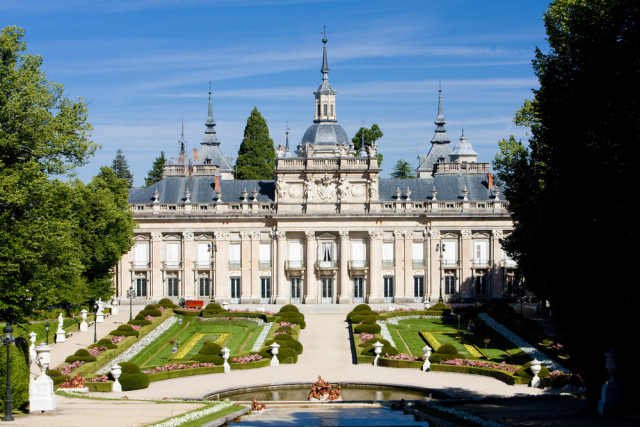 PHB.cz (Richard Semik)
PHB.cz (Richard Semik)
The one final major landmark in the area lies an easy 15-minute drive from city centre. The Baroque Royal Palace of La Granja de San Ildelfonso is a bastion of 18th-century royal opulence in in the shadow of the Guadarrama Mountains. La granja in Spanish means “farm”, but this is clearly a farm like Big Ben is a clock. Philip V, the French Bourbon grandson of Louis XIV the “Sun King”, bought la granja of some local monks and proceeded to turn it into a 600-hectare (1,480-acre) extravaganza of palace and gardens. This then became the summer palace of the monarchs of Spain for the next 200 years. And naturally, it’s – well, a spread fit for a king, with splendid halls decked out in Carrara marble, crystal chandeliers, paintings and sculptures, and Flemish tapestries. Even more impressive are the lavish formal gardens, one of the best examples of their kind from the 18th century, featuring seemingly endless rows and formations of flower beds and a forest’s worth of trees, whether in formal lines or strategically planted copses. Interspersed with all of that is a museum’s worth of statuary, pavillions, and most characteristically, all manner of statues and especially fountains/waterworks featuring mythological figures such as Neptune, Apollo, and Andromeda. All in all, a remarkable experience which approaches the grandeur of France’s Versailles Palace (after which it was, indeed, modeled).
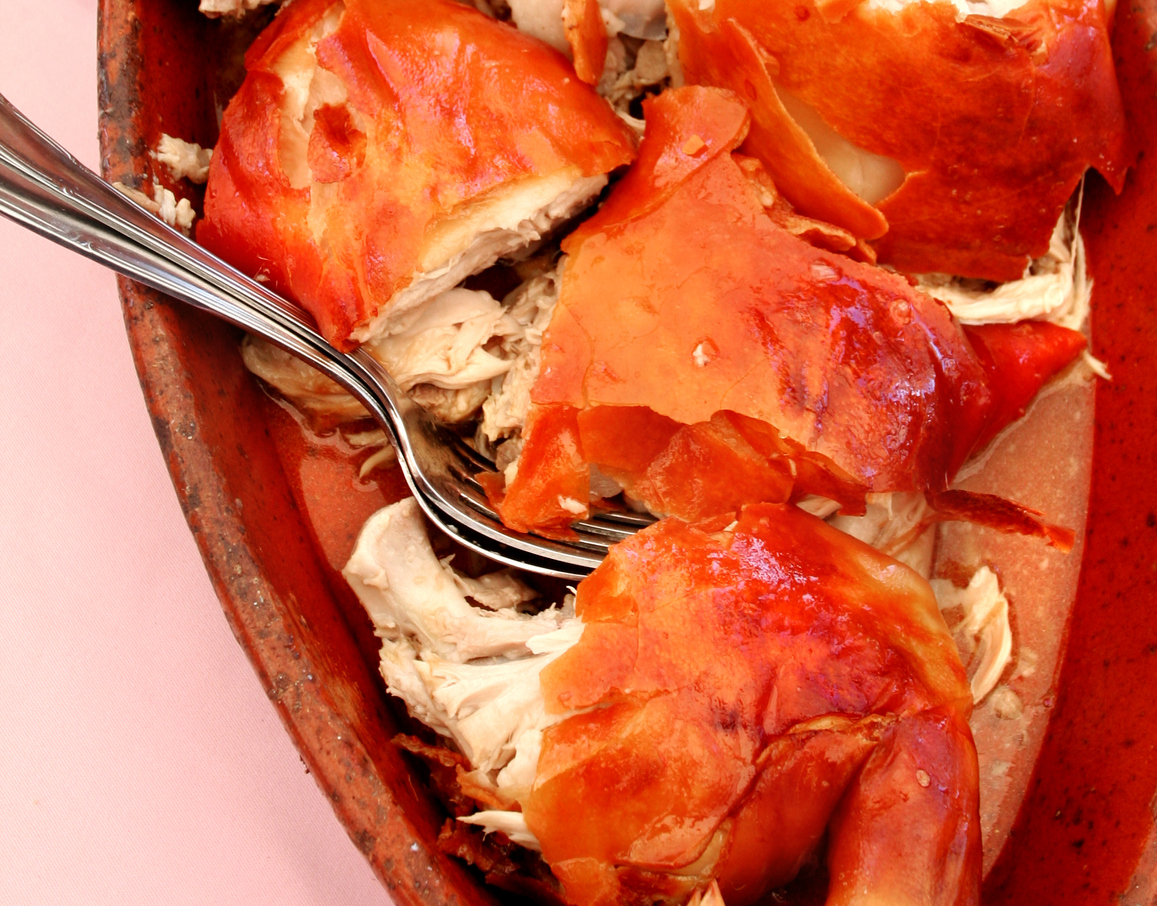 ramihalim
ramihalim
Finally, another excellent reason to spend at least one night in Segovia is to take better advantage of its rich culinary side. You can get a good overview in a nice little Museo Gastronómico, but the proof is in the pudding, as it were, and you’ll want to sample some of the city’s fine restaurants for local specialities such as judiones de la Granja, huge, creamy white beans served in a savoury stew with sausage and bacon; ponche segoviano, a sponge cake layered with cream and enveloped in a layer of marzipan; and most especially cochinillo (suckling pig), one of the all-time classics of Castillian cookery. Carefully slow-roasted for two hours in a traditional clay dish in a wood-burning oven with water and lard. The golden colour and crunchy texture of the skin are marks of a well-roasted cochinillo, as is the tenderness of the meat. So tender, in fact, that some restaurants cut it with a plate rather than a knife.
More info: VisitSegovia.com.

